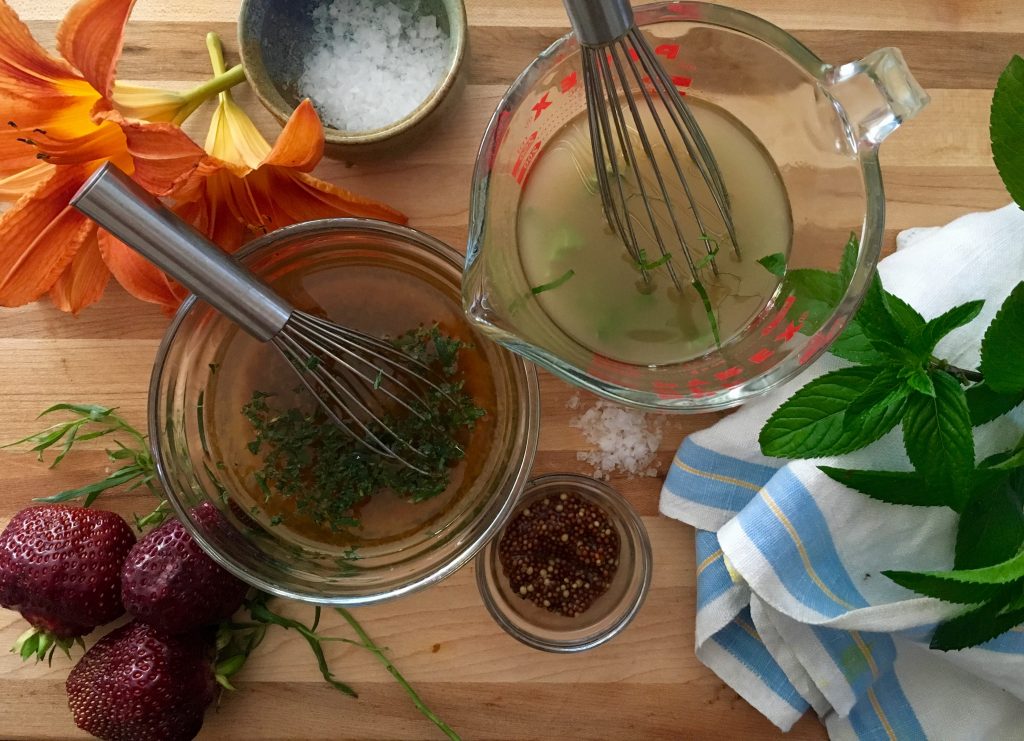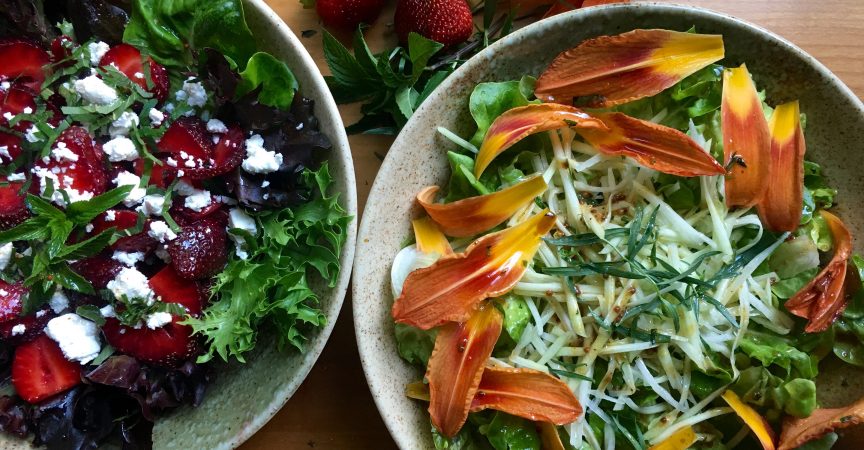How to Shop and Eat Like a Canadian
What will you be eating on Food Day Canada, Saturday, Aug. 3? You might be romanced by crisp green beans, dewy tomatoes and plump stone fruits; or maybe a hot grill full of local meats, fresh-caught fish or Canadian-grown soy is more your style.
Whatever your local bounty pleasure, as you dress up delicious salads, season meats and bake up a storm with summer fruits, will your secondary ingredients be supporting Canadian producers as much as the main events?
They absolutely can! And here’s how:
- Sprinkle food liberally with Canadian salt—take your pick of Atlantic or Pacific sea salts, or table salts from Sifto and Windsor.
- Ditch the imported lemon in favour of verjus or a beautiful local vinegar for your sauces, dressings or marinades.
- Make Canadian-grown canola or sunflower your go-to cooking oils. Toss salads with ultra-nutritious flax oil, or try camelina oil for its grassy and fresh flavour that rivals the ubiquitous olive.
- Crowd-pleasing quinoa is now grown in Ontario, Saskatchewan and British Columbia. Mix it up with diced local veggies, prairie-grown chickpeas and Quebec dried cranberries for a barbecue-friendly side dish.
- Western Canadians can bake up fruit pies, crumbles, crisps, grunts and cobblers with granulated sugar refined from Canadian sugar beets. Look for Rogers or Lantic sugar—the printed code on the front of the bag will begin with “22”.
These are just a few of the 150-plus Canadian ingredients listed in my Shop Like a Canadian feature on fooddaycanada.ca.
You might be wondering why all this matters when imports are often cheaper and easier to find. The simple answer is our country is staring down a global food system that is not always in Canada’s favour (think: today’s canola and pork exports, the pressures on our world-class dairy and poultry farmers, or remember back to the devastating beef crisis of 2003 which catalyzed Food Day Canada).
This is why self-sufficiency is key: when Canadians support Canadian producers it means our food system — made up of our friends, neighbours and family members—is that much more insulated against a volatile market. Supporting Canadian is also better for our environment, and honestly just tastes better.

Here are a few more tips for buying Canadian at the market or grocery store:
“Local” on the label means produced within the province or territory it’s sold in, or within 50 km of the provincial or territorial border.
“Product of Canada” means all or nearly all the food was grown and raised by Canadian farmers, then processed and packaged by Canadian manufacturers.
“Made in Canada from domestic and imported ingredients” means a Canadian company was involved in some of the preparation of the food, and some ingredients were grown by Canadian farmers.
And a maple leaf on the label? That’s just Canada-washing.
We’re going to “Shine a Light on Canadian Cuisine” on Food Day Canada by lighting up iconic Canadian buildings and historic sites across the nation, from The Confederation Centre in St. John’s to Niagara Falls to Vancouver City Hall. Visit FoodDayCanada.ca to find the lights in your province or territory.
Let’s show the world what Canada is eating on August 3rd. Use the hashtag #FoodDayCanada to share your ingredients, recipes, berry-stained smiling babies, and overflowing plates of Canadian food!
Here’s some recipe inspiration to get you started! This 100% Canadian vinaigrette recipe is one that lends itself to countless variations.
The All-Canadian Vinaigrette Recipe

Always begin with a natural sweetener to balance the acid – maple syrup, apple butter even a squirt of local honey. We love apple cider vinegar but other locally fermented ones also are great.
In the summer, the fresh herbs you have in the garden or a balcony window box add another flavour hit. Tarragon adds a hint of licorice; basil goes well with tomatoes and more hearty greens. I love shredded fresh mint with strawberries or other fruit. If you have chives, be generous and don’t forget to use the blossoms.
And at this time of year, don’t forget that daylilies are one of our most delicious edible flowers. I actually plant them just for summer salads.
Ingredients
1 tablespoon (15 mL) apple butter or maple syrup or 2 teaspoons (10 mL) local honey;
3 tablespoons (45 mL) apple cider vinegar;
1 teaspoon (5 mL) whole grain mustard (‘old-fashioned’);
½ teaspoon ( 2 mL) Canadian sea salt ;
½ cup (125 mL) canola or sunflower oil;
1 – 2 tablespoons (15 – 30 mL) chopped fresh herbs…totally your call!
Instructions
Whisk all the ingredients together and refrigerate what you’ve not used. Makes enough for one large, magnificent summer salad of Canadian goodness!







